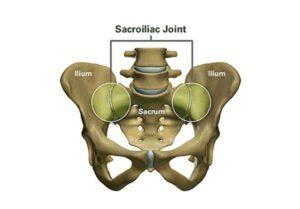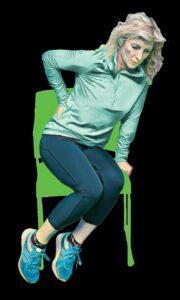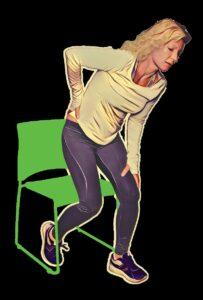A Common Cause of Lower Back Pain That Is Often Overlooked
- posted: Jul. 17, 2023
Up to 85% of all people have lower back pain (LBP) at some point in their life.1 LBP is second only to the common cold as a reason for a physician visit.2 Despite all the attention to LBP, a major contributor is often overlooked as a pain generator.3
According to Dr. Jeff LaPorte, “up to 30% of low back symptoms are related to the Sacroiliac (SI) Joint.4 Yet, most physicians were never trained to consider the SI Joint when evaluating a patient for back pain.”
The Sacroiliac (SI) Joint forms the lowest segment of the spine and is located on either side of the sacrum in the low back and the pelvic areas. The SI Joint connects the sacrum, the triangular bone at the bottom of the spine, with the pelvic iliac crest.

Strong ligaments encase each joint and allow for approximately two to four millimeters of movement during weight-bearing and forward flexion. When these ligaments become damaged—either due to normal wear and tear or by injury—they may have excessive motion. This excessive motion may inflame and disrupt the joint and surrounding nerves.
Underscoring the need for proper diagnosis is the fact that pain originating in the sacroiliac joint can mimic discogenic or radicular low back pain. “This could potentially lead to the wrong diagnosis and treatment that may not include the appropriate pain generator,” says Dr. LaPorte.
Some of the most common symptoms of SI joint dysfunction include:
- Lower back pain (below L5)
- Sensation in lower extremity; pain, numbness, tingling, weakness
- Pelvis/buttock pain
- Hip/groin pain
- Feeling of leg instability (buckling, giving way)
- Disturbed sleep patterns due to pain
- Disturbed sitting patterns (unable to sit for long periods, sitting on one side)
- Pain when going from sitting to standing



Your physician will want to perform several diagnostic tests to determine if your SI Joint is contributing in whole or in part to your symptoms. These tests may include provocative manipulation and injecting the SI joint with painkillers.
Treatment may involve physical therapy and SI joint injections to manage the pain. “For patients who are no longer responding to conservative care, the iFuse Implant System offers a minimally invasive surgical option,” states Dr. LaPorte.
The iFuse procedure is a minimally invasive surgery that stabilizes and fuses the SI joint. Typically, a surgeon places three small triangular titanium implants across the joint, and the triangular shape and strength of the implant resists movement and rotation of the joint. iFuse is the only device for treatment of SI joint dysfunction that is backed by significant published clinical evidence, including two randomized controlled trials.5,6
To learn more about the iFuse Implant System please visit: www.si-bone.com or www.missoulaboneandjoint.com For indications, risks, and safety information about the iFuse Implant System, visit www.si-bone.com/risks.
Schedule an Appointment
For a comprehensive evaluation of your pain please schedule an appointment with Dr. Jeff LaPorte at Missoula Bone & Joint and learn more about your treatment options. Call us at (406)721-4436
Resources:
- Frymoyer JW (1988) Back pain and sciatica. N Engl J Med 318:291–300
- Hart, et al. Physician office visits for low back pain. Frequency, clinical evaluation, and treatment patterns from a U.S. national survey. 1995;20(1):11-9.
- Weksler, Velan, et al. The role of SI joint dysfunction in the genesis of low back pain: the obvious is not always right. Archives of ortho and trauma surgery. 2007 Dec; 10(127) 858-8.
- Szadek, et al. Diagnostic Validity of Criteria for Sacroiliac Joint Pain. Journal of Pain, 2009: 10(4) 354-368Deyo RA, Weinstein JN, Low Back Pain, N Engl J Med 2001: 344(5): 363-370
- INSITE 2yr – Polly DW, et al. Two-Year Outcomes from a Randomized Controlled Trial of Minimally Invasive Sacroiliac Joint Fusion vs. Non-Surgical Management for Sacroiliac Joint Dysfunction. Int J Spine Surg. 2016;10.Article 28. DOI: 10.14444/3028.
- iMIA 2yr – Dengler J, et al. Randomized Trial of Sacroiliac Joint Fusion vs. Conservative Management for Chronic Low Back Pain Attributed to the Sacroiliac Joint. J Bone Joint Surg Am. 2019;101(5):400-411. DOI: 10.2106/JBJS.18.00022
The post A Common Cause of Lower Back Pain That Is Often Overlooked appeared first on Missoula Bone & Joint.
